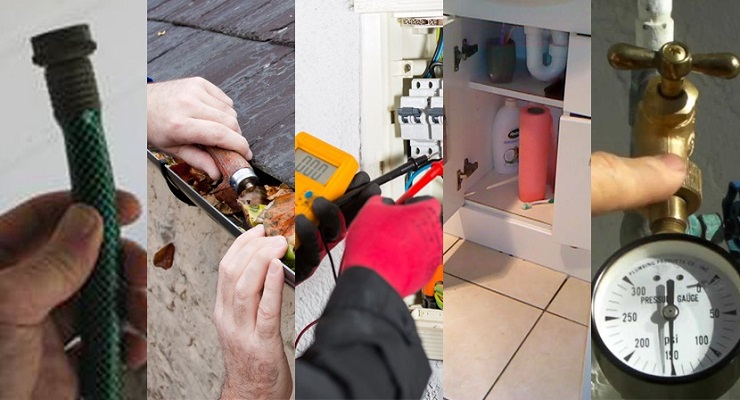
The Jonathan and Karin Fielding Wing of the Virginia Steele Scott Galleries of American Art at The Huntington. Opens to the public on October 22, 2016. Architect and exhibition designer: Frederick Fisher and Partners. Photo by Fredrik Nilsen.
The Jonathan and Karin Fielding Wing, a major addition to the American art galleries at The Huntington Library, Art Collections, and Botanical Gardens, will open to the public this Sat., Oct. 22, to reveal “Becoming America: Highlights from the Jonathan and Karin Fielding Collection,” an inaugural exhibition of more than 200 works of 18th- and early19th-century American art.
The 8,600 square-foot, $10.3 million addition to the Virginia Steele Scott Galleries of American Art was designed by Frederick Fisher and Partners and includes 5,000 square feet of gallery space with dramatic, colorful displays that showcase early American paintings, furniture, and works of decorative art—some of which are promised gifts to The Huntington—and offer visitors important insights into the history of American art practice.
“The collection, display, and contextualization of historical American art is among our chief priorities,” said Laura Skandera Trombley, president of The Huntington. “And the educational and inspirational value of the new wing is immeasurable. It brings to light unforgettable works made with American originality and is sure to delight and surprise visitors of all ages. We are profoundly grateful to Jonathan and Karin Fielding for their vision and generosity.”
Fielding Wing Architecture
Frederick Fisher and Partners, who also designed the Lois and Robert F. Erburu Gallery (a 2005 addition to the same building), developed the new Fielding Wing to feature eight new rooms for art display as well as a stately glass entrance and lobby on the south side of the building that mirrors those on the north side.
The new glassed-in lobby makes entering the galleries (that will total 26,000 square feet of display space) more intuitive and inviting. The new entry will draw visitors to the galleries naturally, with the lobby area serving as a beacon from a popular path that leads through the Shakespeare Garden from the Huntington Art Gallery, where the renowned European art collection is displayed. In addition, the new entry allows easy access to and from the historic Rose Garden Tea Room and the Patio Grill.
With this expansion of the Scott Galleries (the third since 2009), The Huntington becomes the home of one of the largest displays of historic American art in the Western United States.
“Becoming America”
“While the Fieldings have been collecting American art for a relatively short time, they have developed a focused and important body of historical works,” said Kevin Salatino, Hannah and Russel Kully Director of the Art Collections at The Huntington. “We have highlighted these in a creative installation that enhances their educational content as well as their powerful aesthetic qualities.”
With more than 700 examples of American painting, sculpture, furniture, ceramics, metal, needlework, and other related decorative arts, the Fieldings’ collection is widely regarded as one of the most significant of its kind in the United States. The installation of “Becoming America” is grouped variously by the function of the objects, the materials from which they are made, and through the themes that they embody.
In its rich diversity, the Fielding Collection offers a rare opportunity to explore early American history through objects made for daily use and through images of the everyday people who used them. Highlights of the collection include a rare painting on panel made about 1834 by Sheldon Peck (1797–1868) portraying Samuel and Eunice Judkins, residents of Ulster County, N.Y.; a striking portrait of a woman with a bowl of cherries, painted on panel about 1770 to 1780; a high chest of drawers made about 1774 by the Connecticut-based Eliphalet Chapin (1741–1807); a Windsor low-back settee with distinctive steam-bent arm rail made in Lancaster County, Pa., between 1760 and 1780; a rare pair of needlework pockets from about 1775, used by a woman to carry sewing implements and other items; and a Connecticut tall-case clock, with richly painted decoration and wooden works, signed by Riley Whiting (1785–1835) and made in Windsor, Conn., between 1819 and about 1828.
About The Virginia Steele Scott Galleries of American Art
Begun in earnest in 1979, when the Virginia Steele Scott Foundation of Pasadena, made a major gift to The Huntington in memory of art collector, patron, and philanthropist Virginia Steele Scott (1905–1975), The Huntington’s collection of American art has grown from an initial 50 paintings to nearly 13,000 objects. Recent acquisitions include works by Milton Avery (1885–1965), Richard Estes (b. 1932), Sargent Claude Johnson (1888–1967), and Helen Lundeberg (1908–1999), as well as the Gail-Oxford Collection of 18th-century decorative art.
First opened in 1984 with 6,800 square feet of gallery space, the Scott Galleries were expanded to 16,300 square feet with the addition of the Lois and Robert F. Erburu Gallery and completely reinstalled in 2009 to cover the history of art in the United States from the colonial period to the mid-20th century. In July 2014, The Huntington expanded the display of American art further by opening more than 5,000 feet of gallery space focusing on works of 20th- century art in an area previously used for storage.
About The Huntington
The Huntington Library, Art Collections, and Botanical Gardens is a collections-based research and educational institution serving scholars and the general public. More information about The Huntington can be found at huntington.org
Visitor Information
The Huntington is located at 1151 Oxford Rd., San Marino, 12 miles from downtown Los Angeles. It is open to the public Monday, Wednesday, Thursday, and Friday from noon to 4:30 p.m.; and Saturday, Sunday, and Monday holidays from 10:30 a.m. to 4:30 p.m. Summer hours (Memorial Day through Labor Day) are 10:30 a.m. to 4:30 p.m. Closed Tuesdays and major holidays. Information: (626) 405-2100 or huntington.org.










